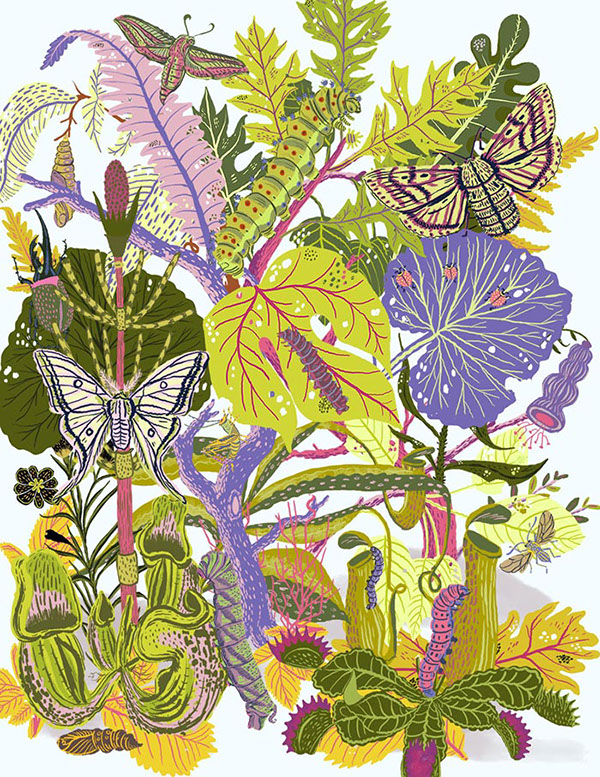Introduction
Open Educational Resources (OERs) are research, teaching and learning materials that are free to use because they are in the public domain or have an open license. OERs are part of a movement to support equal access to education and lifelong learning for everyone. Many people, including educators, learners, and publishers are developing, adapting, remixing and sharing OERs. An OER is like a growing plant; each shared adaptation and remix is a new unfurling leaf making the OER plant more robust. Each new openly-licensed resource is like a new plant. The more robust and varied the OERs, the more sustainable the OER ecosystem. Learners can thrive in an OER ecosystem when we design OERs inclusively to benefit all learners.

Digital OERs
Digital resources come in many different formats including audio recordings, videos, written texts, or interactive simulations. An OER can be as simple as a digital document created with word processing (eg. Google Docs or MS Word) or as complex as modules made up of different content formats (eg. video and text), embedded interactive components (eg. calculators and simulations), and different methods of delivering learning (eg. multi-step quizzes).
Supporting learning differences
There are many ways of learning such as aural (sense of hearing), verbal, visual and physical. Some learners may need individualized strategies to support successful learning while others may simply prefer learning one way to another or prefer learning through multiple styles. For example, a text-based resource could be adapted to a variety of learning preferences by adding audio recordings, images like slides or hands-on activities. Different representations of lessons such as charts, pictures, or simulations can help people learn a topic in different ways—a video about a topic discussed in class can be an engaging resource for learners who have attention span differences.
Educators can find, adapt and mix OERs to design projects and lessons that fit specific needs. Sharing resources with an open license allows other educators and learners to add or adjust a resource to better suit their needs. For example, sharing a digital history quiz created for learners who access content with a computer interface means other educators and learners who use the quiz may further adapt it by changing contexts or adding alternative text to images for non-visual access. Subsequently, these versions become new leaves on the OER plant as the OER meets the needs of more learners.
Benefits for educators
By sharing resources, educators can spend more time focussed on meeting diverse learner needs through adaptation of existing content rather than always having to create new content.
Time and other resources spent to make materials accessible and inclusive are not wasted in the development of “one-offs” that must be recreated each time a learner is identified as requiring an inclusive resource. Instead, inclusive resources are used repeatedly and educators can access a multitude of inclusive resources rather than only those they can afford to develop.
Educators can learn and grow their knowledge and skills as they participate in drawing from, adapting and contributing to the OER ecosystem.
Benefits for learners
Educators can engage learners in contributing to the OER ecosystem as a learning exercise. For example, an educator might facilitate the creation or modification of a wiki page with information learners recently learned from a project or in class.
Learners can use OERs to independently enhance their learning. They can access OERs for research, class projects, essays, or self-study. The ability to remix and add to educational materials can give learners more agency and influence over their own learning—they can become active participants in their learning process. For example, learners could add captions or text descriptions to a video or create a mind map of an essay as an alternative non-linear way of understanding the content. Learners can also explore and share ideas around inclusion and inclusive learning when creating or adapting resources.
Digital OERs can also benefit learners by removing barriers to where and when information can be accessed. For example, remote or self-directed learners and learners in precarious situations like refugee camps can take advantage of digital downloads and asynchronous access.
By thinking of OERs as flexible learning resources and letting go of proprietary notions of the resources we create, we can start to contribute to a rich ecosystem of resources that support the different ways or situations someone may need or want to access learning material.
OER How-to:
For educators and learners:
- Find an OER
- Use or make an OER
- Adapt, remix, extend, modify an OER to better match learner contexts and needs. Include all learners, in particular, diverse and atypical learners, in the edit, remix, and creation of OERs.
- Make an OER
- Share back your resources with the learning community using appropriate open licensing
For educational resource authors, developers, and designers:
- Create resources so copies can be easily made, parts can be reused, and content can be edited
- Design using inclusive practices and consider the accessibility of each content type. The idea is to provide different ways for content to work better in more situations.
- Use open software and platforms available to learning and education communities
- Apply open licensing such as Creative Commons